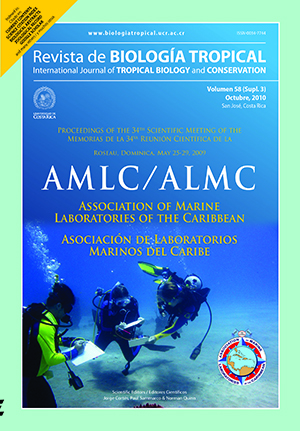Resumen
Pocos programas de monitoreo han estudiado simultáneamente la dinámica de ecosistemas marinos estrechamente relacionados (arrecifes coralinos, pastos marinos y manglares) para documentar su variabilidad espacial y temporal. Siguiendo el protocolo de monitoreo del programa CARICOMP, estaciones permanentes de monitoreo en estos ecosistemas fueron evaluadas entre 1993 y 2008 en la Bahía de Chengue del Parque Nacional Natural Tayrona (Caribe Colombiano). En general los ecosistemas monitoreados han presentado un patrón de estabilidad durante los años de estudio. Mientras los arrecifes coralinos (cobertura de coral) y manglares tuvieron algunas variaciones anuales debidas al paso del huracán Lenny en 1999, los pastos marinos registraron tendencias particulares de cambio (índice ce de área foliar y productividad de hojas) que podrían estar reflejando la variabilidad natural de la pradera estudiada. Por lo tanto se sugiere que los sitios monitoreados en cada ecosistema han tenido un desarrollo saludable en los últimos 16 años. Estos resultados son importantes para mejorar localmente las estrategias de manejo (Parque Nacional Natural Tayrona) y para evaluar la dinámica a largo plazo en los ecosistemas marinos del Caribe.##plugins.facebook.comentarios##

Esta obra está bajo una licencia internacional Creative Commons Atribución 4.0.
Derechos de autor 2010 Revista de Biología Tropical
Descargas
Los datos de descargas todavía no están disponibles.


